There are around 17,500 species of butterfly in the world and 160,000 species of moth. This means most caterpillars will turn into moths, though many still turn into butterflies. Sometimes the larvae of sawflies are also called caterpillars.
Contents
Monarch butterfly
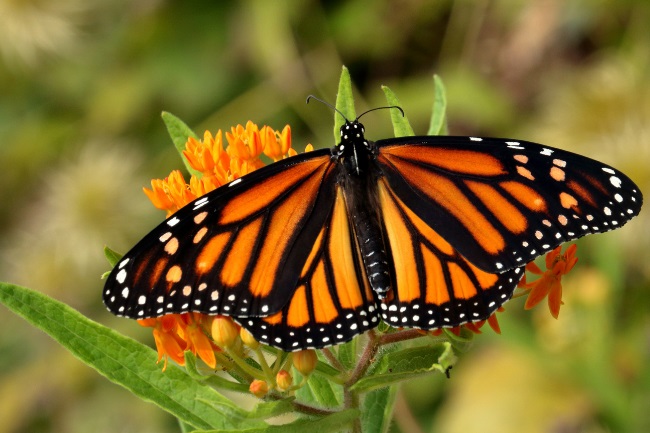
Perhaps globally one of the most famous butterflies, with its striking red and black patterning. One of the reasons for its fame is the epic migration it undertakes, from North America down to Mexico and California. However, many of the individual butterflies never have to make this journey, as it has several generations, which spending their day breeding and eating.
It is the late summer generation that has the short straw, flying down to its winter home, where they cluster together in vast groups, entering diapause till the warmer weather wakes them, and the whole thing starts again.
Also read: What Caterpillars turn into Monarch Butterflies? (A List)
Brimstone butterfly
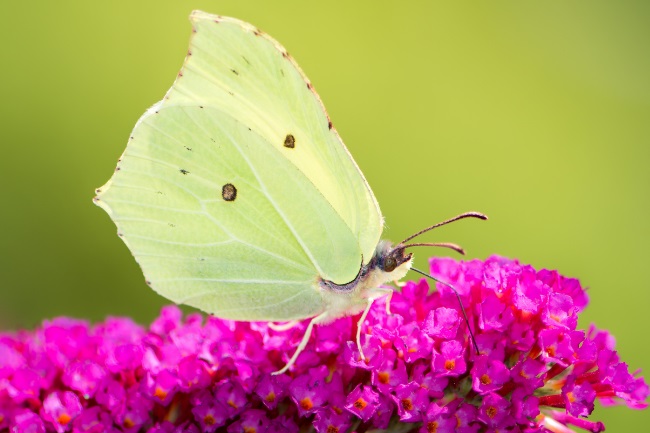
The brimstone butterfly is, some say, the original butterfly, giving this group their name from their buttery colour. Their elegant wings end in pointed edges, allowing them to resemble winter leaves during their diapause.
This species is unusual for a butterfly species, as the males and females can easily be told apart, the males being a deeper yellow and the females and pale cream. They are found throughout Europe to Eastern Asia, with the caterpillars enjoying common buckthorn and alder buckthorn as their key food.
Adonis blue
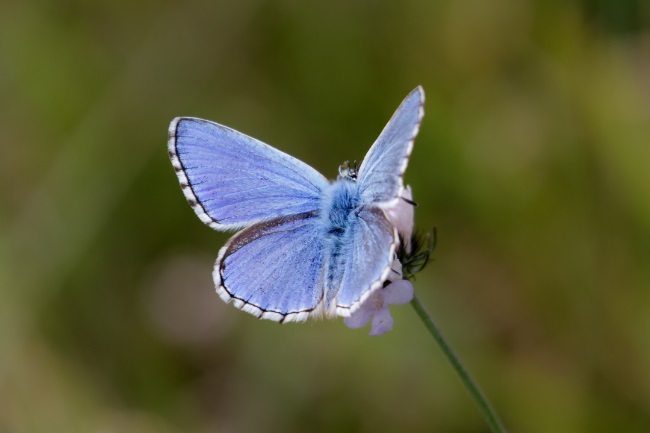
Many species of blue butterfly in Europe have a fascinating lifecycle, which relies heavily on the help or exploitation of ants. The adonis blue is found throughout Europe and has a beautiful deep blue shimmering colour on its upper wing and a beige, brown and orange speckled pattern to its outer wings.
The caterpillars of this species spend their life like many others, munching away happily on their favourite foodplant. However, unlike many other species, they are often attended on by ants, who are rewarded for protecting the caterpillar through being fed a sweet sugary liquid the caterpillar secretes.
When autumn approaches, they make their way to the ground, where they pupate. Once they have transformed into their pupal form, passing ants come and either carry it back to the nest or bury it in the ground, where it is kept nice and safe and sheltered till it emerges as an adult in spring.
Also read: What Does Caterpillar Poop Look Like? (Insect Frass)
Guava skipper
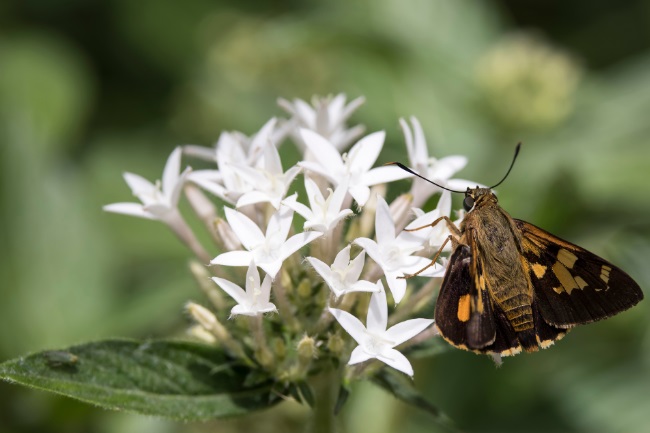
This stunning butterfly looks quite different from many other common butterfly species; it’s long wings making it look a little like a tiny blue aeroplane. The deep blue colour that covers most of its form is cut through by a radiating pattern of pale green lines and two orange dots.
Found in Texas and down through Central America to Argentina, its caterpillars feast on the leaves of the guava plant.
Small and red to start, the guava skipper’s caterpillars start life cautiously, making themselves a little hiding place from a folded leaf, where they can shelter in the day and then come out to eat at night. Once they’ve made their journey into adulthood, they feed on nectar from a range of plants.
Painted Lady
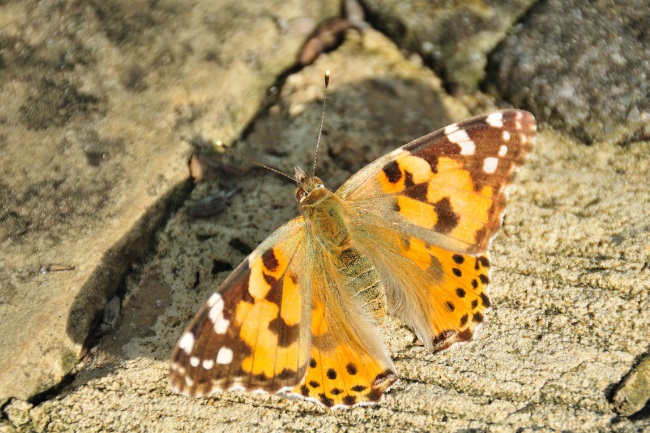
The painted lady looks somewhat like a watercolour of a butterfly, its pale orange and black colouring not so intense or delineated as some butterflies. It is found across the globe, aside from Antarctica and South America.
They are another famous migrant, though unlike the monarch butterfly they don’t appear to hibernate. Instead, they mate constantly throughout their journey, successive generations carrying on the migration. The adults feed on various nectar sources, as well as honeydew.
Also read: What do Butterflies Eat and Drink? (Detailed Guide)
Tiger mimic queen
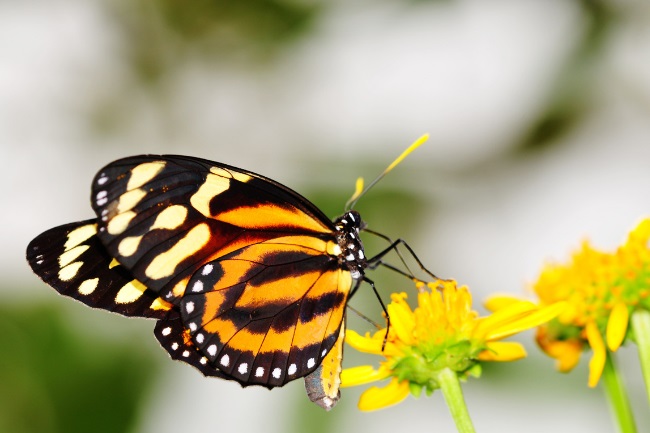
The tiger mimic queen is aptly named; it’s impressive black stripes and cream and orange colours, making it look just like a tiger print. These colours aren’t just for show; both the caterpillar and the adult containing toxins that can induce vomiting in any bird that tries its luck.
It is found from Texas down to Peru. It feeds on milkweed during its larval stage before changing to somewhat less appealing bird droppings for fodder as an adult.
Because the leaves of many of the plants they eat carry dangerous toxins, the caterpillars of this species have found clever ways to get away from eating these poisons. The young caterpillars cut rings into the leaf, eating the centre once the toxins are no longer able to seep in. Older caterpillars are big enough to snip through the leaf veins, stopping the toxins at their source.
Also read: Are Caterpillars Poisonous? Are they Dangerous? (Explained)
Malachite
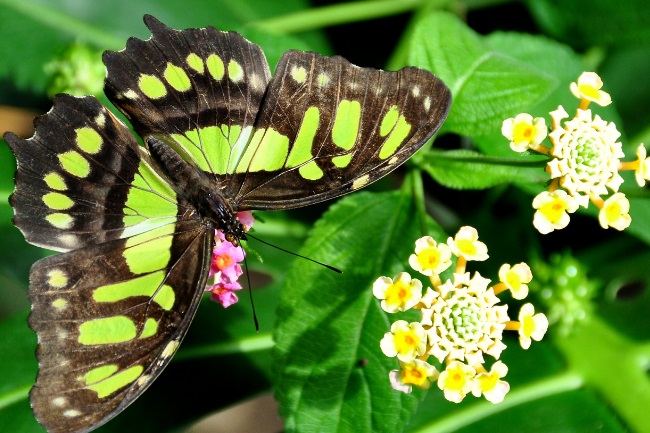
This butterfly is somewhat unusual in its use of green within its costume. Its green patches, surrounded by orangey-brown borders, camouflage it perfectly when it roosts within the foliage of trees and shrubs.
This butterfly is found from Florida down to Brazil and spends most of its time in fruit orchards and subtropical forest. The adult feeds on rotting fruit and bird droppings.
Also read: How do Butterflies get their Colour? (2 Ways Explained)
Milbert’s tortoiseshell

Found in the cooler northern wetlands, from Alaska to Nevada and West Virginia, Milbert’s tortoiseshell resembles other tortoiseshell species with its bright orange border and darker centre.
Nettles are the caterpillar’s food, while the adult enjoys nectar from thistles and lilacs. When small, the caterpillars weave themselves a nest, where they can feed safely with their siblings. Once they are old enough, they will head off on their own, folding leaves and tying them together with silk as a shelter.
Common Buckeye

The common buckeye would be a rather plain-looking brown and orange butterfly if it weren’t for the striking eyespots scattered liberally across its wings. While resident in the southern United States, this butterfly expands its range during the summer, occasionally being found up to Canada.
The young caterpillars feed on several host plants, including false foxglove and toadflax. Adults gather nectar from many different species, such as chickory and gumweed. They like open spaces with some bare ground, where the males will sun themselves and wait for females.
Not all caterpillars turn into a beautiful butterfly.
Here are a few that turn into other interesting species.
Elephant hawkmoth
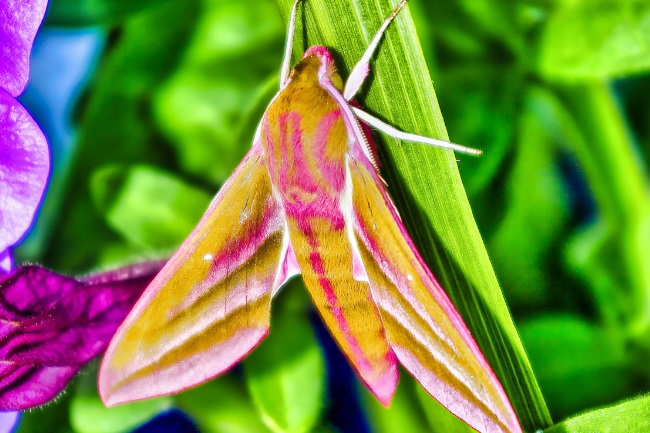
The elephant hawkmoth has to be one of the prettiest moths in the world. Coloured in stripes of bright pink, mossy green and cream, it is very eye-catching. Due to its night flying lifestyle, however, most people are more likely to come in to contact with its caterpillar.
The elephant hawkmoth caterpillar is a large grey creature. Aside from its impressive size, what makes it particularly fascinating is the eye spots it carries on either side of its head. When threatened, it pulls back its head, making the area around the eyespots bunch up.
This makes it appear like the head is that of a larger creature. It then waves its head around dramatically, impersonating a snake. With a bit of luck, this charade with be enough to scare off even the hungriest of predators.
Also read: Difference Between a Moth and a Butterfly – Explained
Cecropia moth
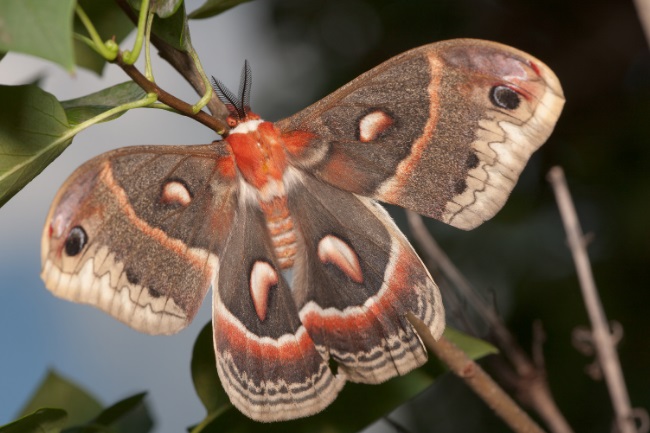
We tend to think of moths as small and unimpressive, but the cecropia moth puts pay to this. The largest moth in North America, it has beautiful grey wings with vibrant orange spots. Its size, approaching 6 inches, is impressive enough without its stunning colouration. It is one of the giant silk moths and as such spins a dense cocoon of silk about its pupa. They are found in forests East of the Rocky mountains.
Honeysuckle Sawfly
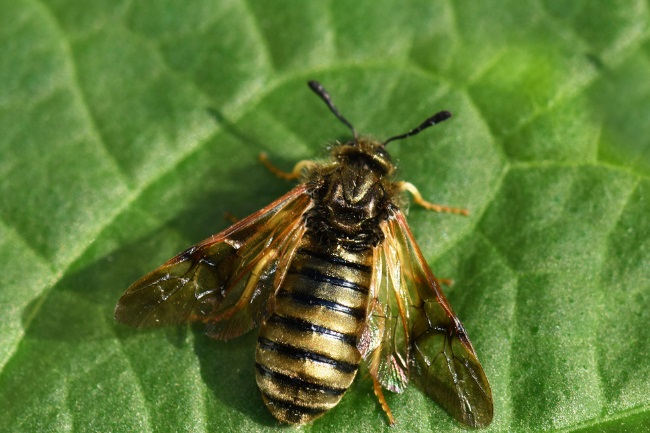
Sawflies are a type of insect closely related to bee and wasp species and often look superficially like their relatives in their adult form. Their larvae are often called caterpillars, as they can look very similar to the larvae of moths and butterflies. However, their additional prolegs give them away as not being part of the Lepidoptera group.
The larvae of the honeysuckle sawfly are pale green, with several black spots down their bodies. As adults, they look similar to a large wasp, though they don’t have the nasty sting in their tail.
Also read: Is a Caterpillar an Insect? (Explained)
The caterpillar’s journey
The wonder of caterpillars is how beautiful and fascinating they can be within their own right. Add to that the fact that they can turn into so many different and wonderful species and they truly are fascinating to observe.

